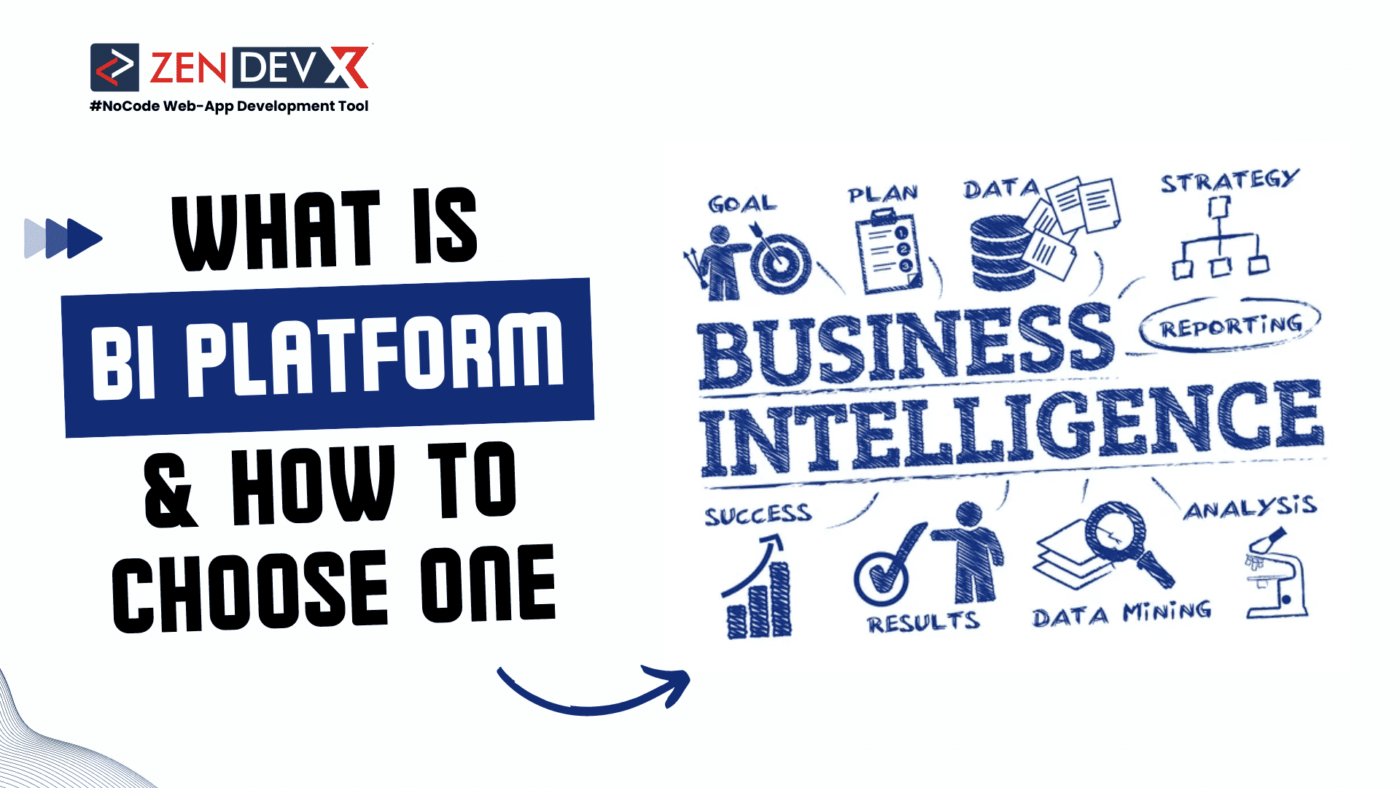Explains a Business Intelligence Platform
Designed to assemble, organize, and assess information from numerous sources inside a business, a BI platform combines unstructured and structured data into valuable insights by way of a centralized location for compiling and storing both of them.
On a business intelligence platform, advanced analytics, data mining tools, and visualization tools used together help to uncover trends, correlations, and patterns that would otherwise remain buried. Among easily available data forms, interactive dashboards and reports offer a BI tool that helps businesses make data-driven decisions.
Why Do Platforms for Business Intelligence Matter ?
In this data-driven world, using a business intelligence platform is absolutely essential. The central nervous system of your firm is a BI platform that provides a consistent platform to gather and review information from several sources.
The BI reporting features of a business intelligence platform democratize data, allowing a wider range of users all over the firm. A BI platform promotes a data-driven culture whereby everyone may apply insights to improve their decision-making.
Purpose and Attributes of a Business Intelligence System
A competent corporate business intelligence system does more than just data storage. A business BI system offers a broad spectrum of BI tools aimed to let you access your data. These primary ones usually allow one to categorize the features of business intelligence systems.
Collected Data
Among other areas, a BI system can gather data from databases, spreadsheets, and social media. This guarantees a full viewpoint on the running of your business. Using its high data intake capabilities, a business intelligence system enables businesses to quickly compile and integrate data.
Methodological Data
Raw data sometimes needs cleansing and conversion before you can apply the analysis tools of a BI platform. Tools included in a business intelligence system support the consistency and accuracy of your data. Actionable insights can be obtained by means of tools like guided natural language query (NLQ), therefore easing the journey from data to decision.
Analyze Data
In a BI system, analysis releases the real data potential. A full business intelligence platform’s strong analytic features enable users to execute ad hoc searches, slice and dice data, and create computed fields. BI and analytics solutions enable end users to make data-driven decisions; guided NLQ even enables non-technical users to tailor their data exploration.
See Visually in Data Visualization
Creating readily digested visualizations from challenging data sets is one of business analytics systems’ strongest suits. Interactive charts and graphs used to create customizable business intelligence dashboards facilitate the easier identification of trends, patterns, and anomalies. Strong BI systems provide a wide range of data visualization features to enable people to interpret challenging data.
Understand Information
Once your data is collected and managed by the BI platform, it provides means of analysis and investigation. The BI program highlights how users could become more aware of their data, therefore fostering an environment where insights are not just noted but also comprehended.
Recording Information
On a BI platform, strong reporting tools enable users to produce tailored, schedulable reports for distribution to stakeholders. BI reporting tools help companies to make decisions grounded on current data. Data storytelling is the capacity of graphics and clear communication to uncover insights appealing to the audience of the report by means of data points woven into a compelling narrative.
Benefits of Implementing a Business Intelligence Tool
Enterprise BI solutions and BI platforms offer businesses several benefits by enabling them to make data-driven choices, boost efficiency, gain a competitive advantage, and expand their activities.
Factors Influencing Choice of Business Intelligence System
Regarding selecting analytics and business intelligence solutions, businesses have to carefully evaluate their specific needs and usage requirements for a platform.
Scales of Scale
Your data needs will definitely grow in line with the scale of your business. Your BI solution should be easily expandable to satisfy growing user demands and data volumes. Can the system of business intelligence connect with other data sources? Could the BI platform handle an ever-rising user count?
Emphasize Simplicity
Not every employee in your firm will be a data scientist, hence your business intelligence system should be able to handle this. The chosen BI platform ought to have a simple interface that suits people with varying degrees of technological proficiency. Look for instruments in a business intelligence system that include drag-and-drop capability, intuitive dashboards, and self-service analytics.
Linking
The seamless interaction of your business intelligence platform with present systems determines its efficiency in the complex IT environment of modern times. Make sure the BI platform you choose can link everything using your data warehouses, CRM systems, and other apps to show a consistent perspective of your data.
Automation
A BI system mostly benefits from automating repetitive operations and process simplification. Look for instruments handling data collecting, transformation, and reporting. These kinds of features enable your business intelligence system to free valuable time and funds for your employees to focus on strategic decisions and analysis.
Data Management
Strong data management tools help you to guarantee the accuracy and consistency of the data you apply in your business intelligence system. The BI platform you choose should have features for user access limitations, data cleansing, and data governance in order to protect the integrity of your data.


